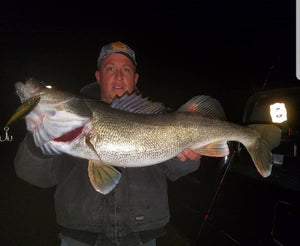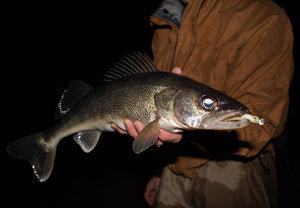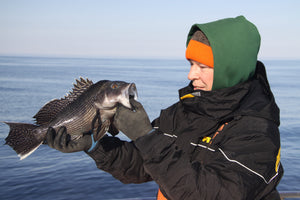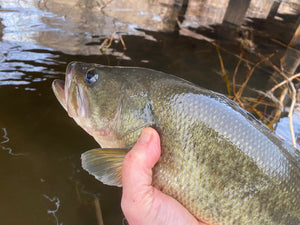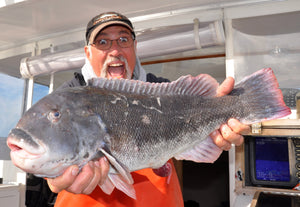Up Your Game for Summer Bigmouths

It can be tough to squeeze in some freshwater bass fishing during the summer months with saltwater action in full stride. Still, a couple of days on the pond are a fun way to refresh, fish without taking a beating, and squeeze in a few trips that don’t take up the entire day.
That said, there’s no reason you shouldn’t be trying to make the most of your time on the sweeter side. To that end, here are a few tips to up your bassin’ game that should improve not only your overall action, but chance at hooking a personal best.
It’s Okay To Wade
It’s hard to go back to wading once you own a boat, but there is no more intimate way to learn a lake or pond than to wade its perimeter. Wading forces you to slow down, keep quiet and proceed gently so you don’t spook your quarry - all practices that will serve well when you get back to stalking bass with stripes on salty flats.

Similar to striper fishing, chunky largemouths are often found along shadow lines after dark. OutdoorTom.com photo.
Wade the edge of your favorite hotspots and keep your eyes focused five to ten yards ahead of each step. Work along an overhanging line of trees, poke your head inside the canopy and witness the tangle of branches beneath the surface. Note how larger limbs protrude underwater well beyond the surface brush and see first-hand how much additional structure is hidden by the leaves. Hand-pitch a weedless wacky worm to a bass you see locked-up back inside the tangles and try to haul it out. In so doing, you’ll see up close and personal how these fish use heavy cover for both feeding and flight responses.
Wading also allows you to find and isolate troughs and holes, hidden slopes and shoals, cool-water pockets, and ambush points used by a variety of predator species. It offers the opportunity to work some waters that may not be accessible by boat, especially back cove areas blocked or separated from the main lake, stream or river by shoals or thick brush.
As you wade, make a mental note of any fishy aspects you discover and you’ll be able to take it all into consideration the next time you cast from a deck. The more you learn about shoreline structure while wading, the more confident you’ll be in your approach. Spend a few trips wading and you’ll also come across enough big bass to convince yourself that, no matter how good you are at the bassin’ game, there is still plenty of room for improvement.
Keep in mind that not all shallow waters are safe for wading. Proceed slowly and carefully as you start out because muddy bottom and heavy weed growth can hide drop-offs while discolored water obscures submerged logs and bottom debris from sight. Wearing a good pair of polarized sunglasses will help you see deeper into the water most days, revealing not only more bass but potential tripping points as well.
Stay Up Late
Most bass lakes see a lot of pressure during the day. From dawn ‘till dusk during the open season, there seems to always be somebody on the water. Big bass learn to adjust to this pattern, sometimes choosing to feed most heavily late at night - long after most anglers have left the lake. For that reason, it makes a sense to experiment with a little late-night bass fishing. Sure, it’s tough to see, hard to ignore the mosquitoes and no-see-ums, and limiting in terms of the lures that might produce – but it is also very productive, spooky and exciting.

Get out of your boat and walk or wade the shore to become intimately familiar with your favorite bass ponds. Photo by Felicia Scocozza.
Make it a point to head out after everyone else heads home this season and you may be surprised by the action you find. Naturally, topwater offerings such as Jitterbugs, Hula Poppers, Heddon Zara Puppies and soft-plastic frogs will be your main offerings, but on a bright, moonlit night you might also get away with a slowly worked buzzbait or floating Zoom Trick Worm twitched across the surface.
Work slowly and meticulously along the bank after dark, but occasionally point a few casts offshore around isolated weed mats and lily pads. Fish weeknights and you might fish alone.
Twitch Away
Most freshwater anglers that work our local lakes with plugs tend to cast out and instantly begin reeling them back. That’s fine if the fish are in an aggressive mood but incorporating a twitch into your retrieve often sparks strikes from bass that would otherwise turn away.
Floating Rapala plugs are ideal for twitching. Cast them out, wait until the entry disturbance subsides, and then twitch them ever-so-gently on the surface. On a flat, quiet morning, all you want to do is impart enough motion to turn one of these plugs from north to east. Twitch gently two or three times, and then let the plug rest for twenty or thirty seconds. Follow up with a second series of three or four twitches, slightly more vigorous than the first. Allow another ten to twenty seconds and then either reel your lure under or twitch it home at a moderate pace. Oftentimes, bass will watch a gently twitched lure intently, charging it when you change the pace by beginning your retrieve.

Photo by Felicia Scocozza
Many anglers don’t have the patience to twitch their lures, seemingly in a hurry to beat other casters to the next bassy-looking lair. Slow down and make the twitch part of every cast, however, and you’ll start to pick fish even from waters others have already worked.
Good Wood Is Key
Everyone knows that bass love structure, especially the wooden type. No matter where you fish for largemouths, submerged logs, sunken rowboats, floating rafts, dock pilings, stumps and overhanging limbs should be primary targets. Keep in mind, however, that not all wood is created equal. Learn to seek out the best wood and spend less time casting to the bad.

Perfect habitat for Largemouths. Photo by OutdoorTom.com
As a rule, the best wood for holding largemouths has been submerged or partially submerged for several years. Such wood will host considerable weed and bacterial growth, attracting small baitfish and, in turn, larger predators. A single small log in shallow water can produce excellent results early and late in the day, as can a few large, submerged planks or an entire submerged tree. A freshly fallen tree, by comparison, may offer little more than passing interest to cruising bigmouths and an opportunity to hang your lure on a limber branch.
As a rule, hardwoods like oak and birch generally out-produce softer pines. Pressure treated lumber seems to hold fewer fish than non-treated lumber – making brand new decks less attractive than old, rotting ones. Make time to seek out and probe rickety, lack-luster, decrepit wooden structure as this is the best for holding bass.

Big bass often feed on the late shift even early in the summer season. Tempt them with large surface lures – but be sure to bring along plenty of bug spray. Photo by Felicia Scocozza.
Wood that provides shade can be especially productive – even if it is pressure treated. Look for pool decks, porches and patio decks that extend out over the water to hold fish in their shadows during the heat of day - even if they protrude over depths as shallow as six inches (fish such spots quietly and with respect for property owners.) Of course, overhanging trees with heavy leaves that block out the sun are also worth a shot but be aware that bass in such shady waters are often sulking and usually require finesse presentations.
- Bryce Poyer

